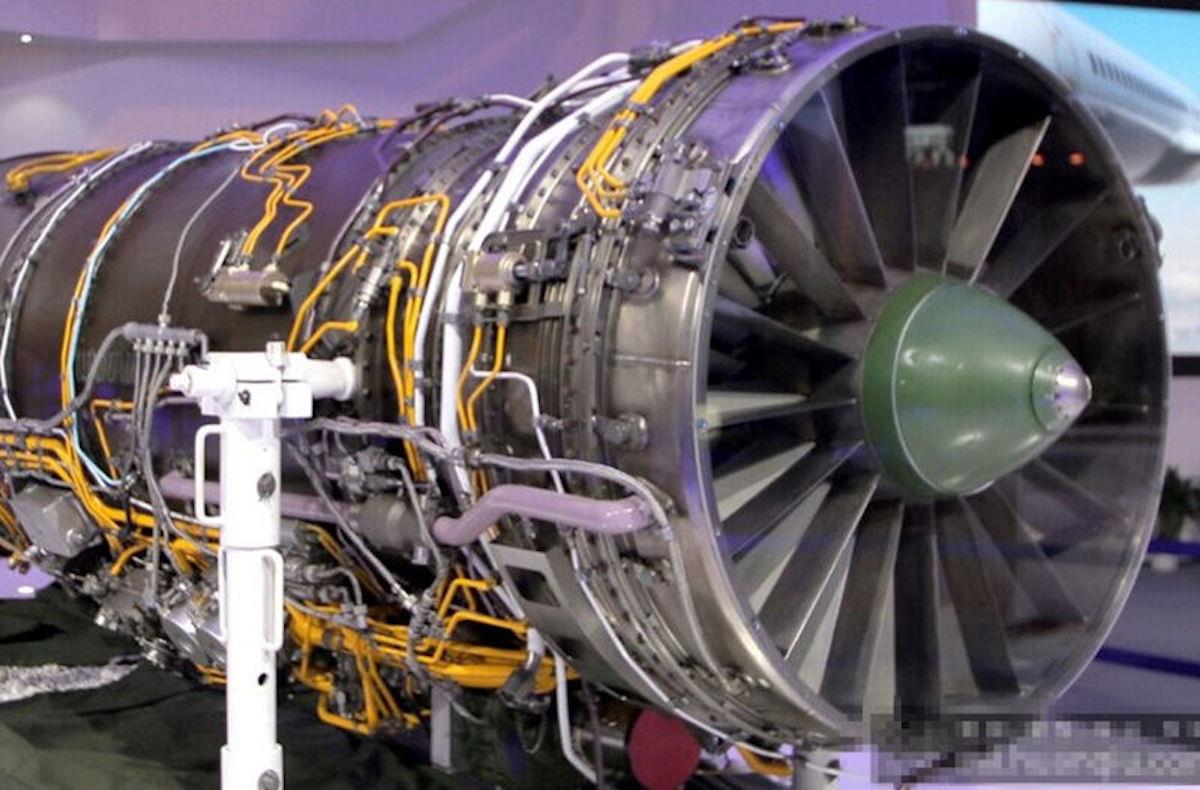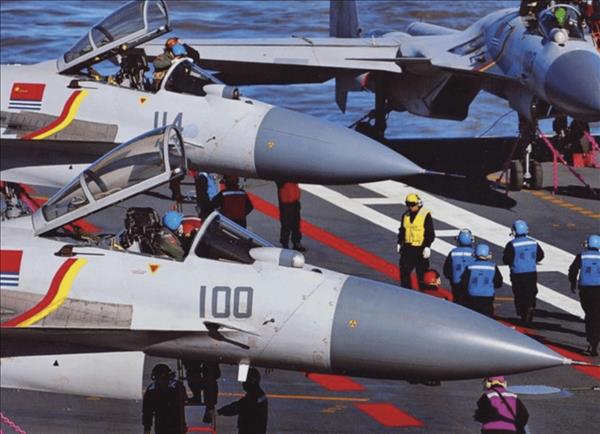(MENAFN- Asia Times) China has upgraded its J-15 carrier-based fighters with new domestic jet engines, significantly elevating its combat capabilities while enhancing technological self-reliance.
last week, global times reported that China had tested a J-15 Flying Shark carrier-based fighter equipped with what appears to be indigenously-developed engines. The J-15 previously used Russian AL-31F engines, which while sufficient for the aircraft's current mission also present technical, operational and political challenges.
video footage released by cctv last week shows the J-15 in a land-based facility sporting Liming WS-10 Taihang engines. defense resource janes notes that, most likely, the WS-10B version has been installed in the jet.
The engine model has 135 kilonewtons of thrust, significantly more than the 98 kilonewtons generated by the f414-ge-400 used in the Boeing-made F/A-18 Super Hornet.
This upgrade would appear to solve many of the problems in China's J-15 fleet associated with Russian engines, including regarding maintenance costs.
“The biggest disadvantage of Russian engines is that their service life is relatively short, while Chinese engines have improved their overall performance, especially in terms of lifespan,” Song Zhongping, a former PLA instructor, was quoted saying by south china morning post last week .
“The safety and reliability of the engine will directly affect operational capability, especially as the J-15 is a carrier-based jet. As hangar space on an aircraft carrier is limited, frequent engine replacement is very troublesome,” said Fu Qianshao, a retired PLA Air Force equipment specialist, who was also quoted by South China Morning Post.
Before the upgrades, China's J-15 had limited combat capabilities. as noted by david cenciotti in the aviationist , the J-15 has been derisively referred to as“flopping fish” by Chinese media due to its minimal range and weapons payload.
Cenciotti says that flight tests with the J-15 carrying heavy weapons aboard the ski-ramp carrier Liaoning have limited its attack range to just 120 kilometers from the carrier. In addition, while the J-15 can carry 12 tons of weapons, it can't hold more than 2 tons if loaded with fuel.
Cenciotti also notes that the Liaoning and Shandong aircraft carriers' ski-ramp configuration makes it extremely difficult to launch aircraft that weigh more than 26 tons unless the plane has more powerful engines.

The Liming WS-10 Taihang engine. Image: Twitter
However, alongside developments such as the electromagnetic aircraft launch system (EMALS) on China's third aircraft carrier, the Fujian, the engine upgrades may bring the J-15 up to par with its US rivals including the F/A-18 Super Hornet.
China has also upgraded its J-20 stealth fighters with domestic engines, substantially increasing their capability. this april, asia times reported that J-20 patrols over the South China Sea were powered by the domestically-produced WS-15 engine, which gives the aircraft supercruise and supermaneuverability to challenge US fighters such as the F-22 and F-35.
The engines' reputed longer lifespans may also allow China to conduct aerial attrition to a much higher intensity. asia times has previously reported on China's aerial attrition strategy against Japan, which aims to force Tokyo to sustain an operational tempo beyond its capabilities in responding to ever more persistent Chinese incursions.
The new engines can also extend the J-20's range, enabling it to conduct long-range strikes in complex, defended airspace before retreating to the safety of China's air defense network.
China has a clear strategic interest in domestically-produced jet engines. as noted by china signpost , China seeks to avoid overdependence on Russia for its jet engines to close its logistics and supply chain for the critical technology. Russia's reliance as a supplier could wane as it buys rather than produces more jet engines to modernize its own air force and replace battle losses in Ukraine.
As China drives to become a leading exporter of jet fighters, its clients will likely want products that are not dependent on any other foreign supplier for maintenance and technical support, Signpost notes. It also notes that China's jet fighter sales may start to undercut Russia's, leading to the latter possibly blocking jet engine sales to China to protect its market share.
Signpost claims China has had bad experiences with Russian aftermarket support for its jet engines, including expensive and delayed spare part deliveries and manuals that are available only in the Russian language or non-existent.
Until now, China has struggled to produce jet engines, which has significantly hampered the capabilities of its top-tier fighters. a 2020 report by the china aerospace institute (casi) notes that China's aerospace industry suffers from inadequate basic research and a lack of sophisticated design and manufacturing tools. China's aerospace industry has thus failed to keep up with changes in China's strategic environment, the CASI report said.
Moreover, China also faces institutional bottlenecks in its indigenous jet engine program. in a september 2021 article in the national interest , Robert Farley and J Tyler Lovell note that China's long reliance on borrowing or copying foreign jet engine designs, lack of access to trade secrets and insufficient domestic industrial ecology have all conspired against indigenous jet engine production.

China's J-20 fighters fly in formation at an air show. Image: China Daily
Farley and Lovell note that China's attempts to reverse-engineer Russian jet engines in the 1990s and 2000s resulted in underpowered units with short lifespans. They also note that Russia has refused to sell China stand-alone advanced ALS-117 engines due to the latter's unauthorized copying of its equipment. They claim that China can't study the ALS-117 without breaking it, ultimately forcing it to rely on its domestic base to produce jet engines.
CASI notes that jet engines are a key focus in China's Military-Civilian Fusion (MCF) strategy, which aims to accelerate the development of critical technologies by coordinating military and civilian industries with research institutions.
Apart from MCF, China is also leveraging its growing indigenous expertise to overcome jet engine production problems. For example, sina news recently reported that Chinese Academy of Sciences researchers have developed a titanium alloy for jet engine blades that offers increased lifespan, decreased weight and reduced operating costs.
All told, China appears finally to have the resources, technology and personnel necessary to compete with Russia and the West in jet engine production.

























Comments
No comment